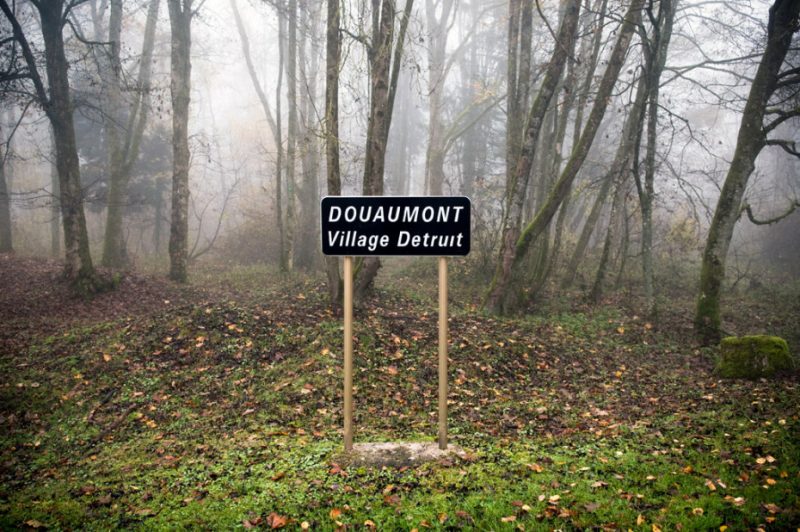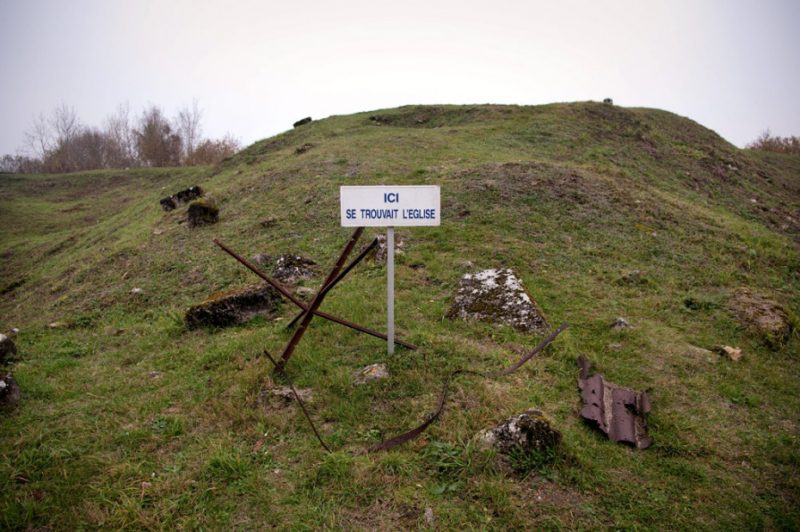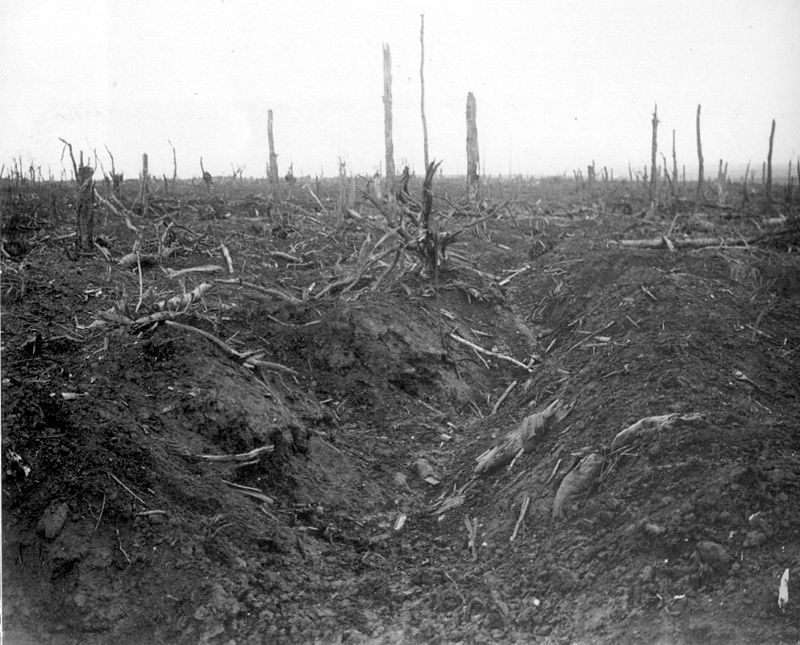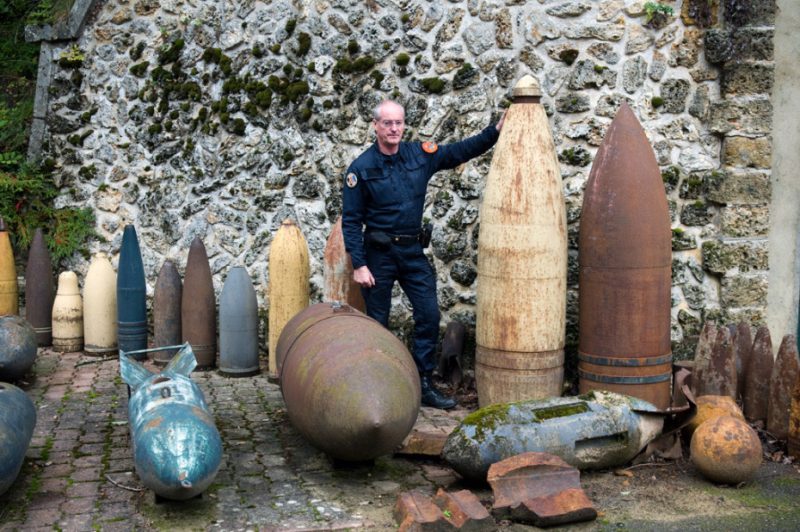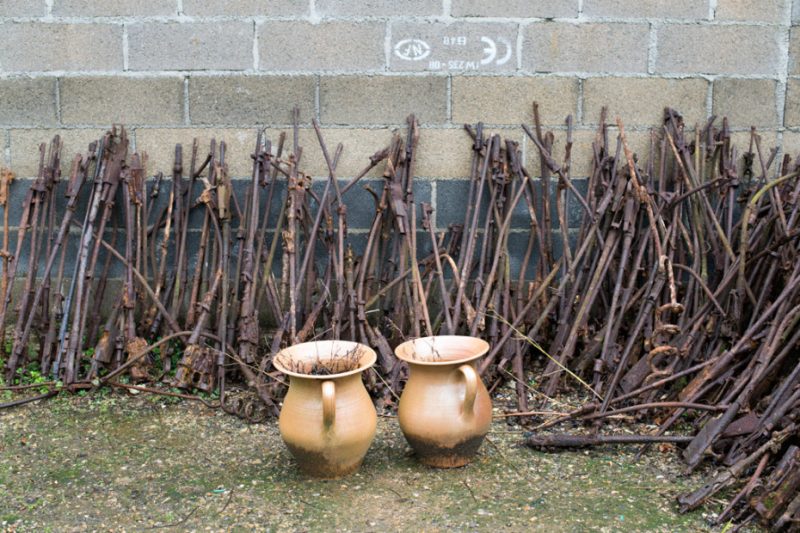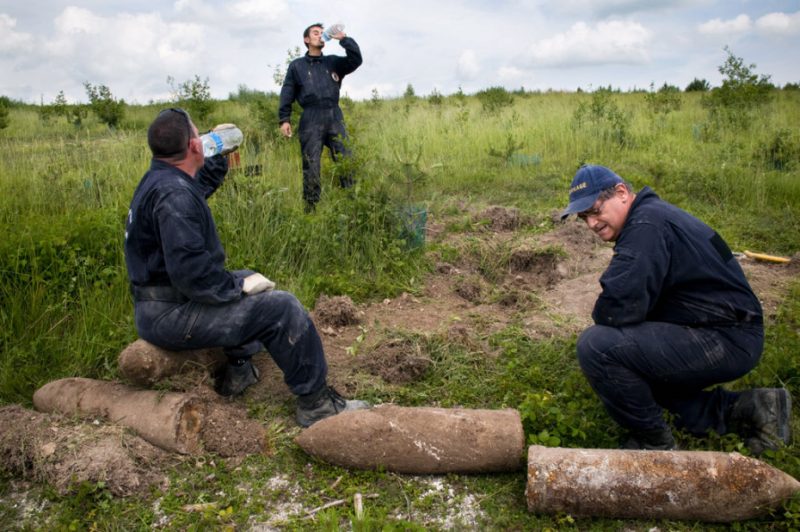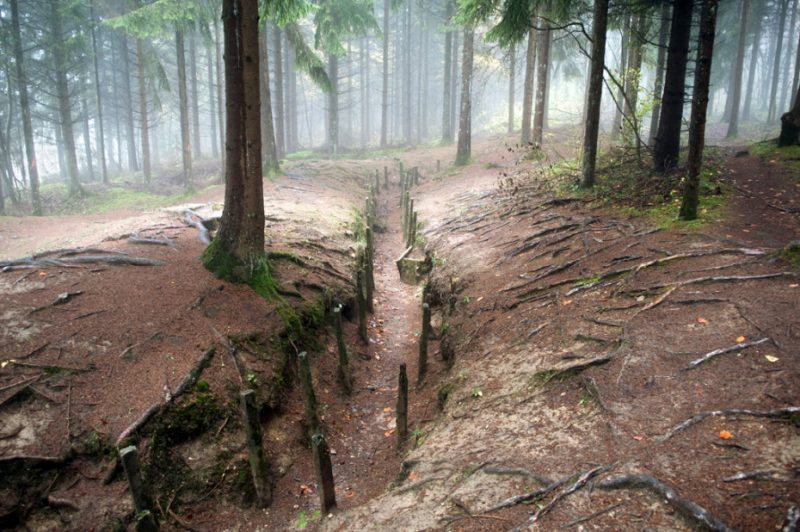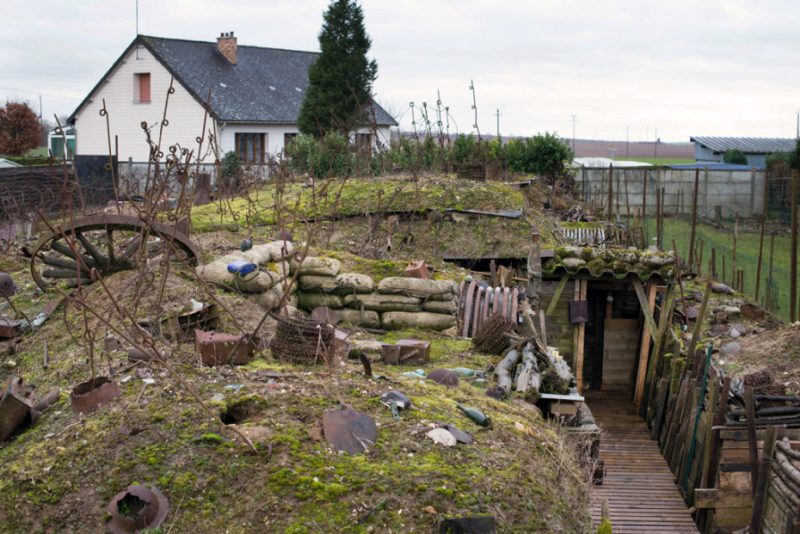The vast area around the French city of Verdun remains suspended in the year 1916. During the First World War, these hills and gorges were cratered by a continuous ten-month-long artillery bombardment more intense than any before and any since. The mature beech forests that cover the hills were home to some of the Great War’s most bitter fighting; as many as 150 shells fell for every square meter of this battlefield.
“Douaumont, Destroyed Village”
“Here, stood the church.”
As well as being the longest battle of the Great War, the Battle of Verdun also has the ignominy of being the first test of modern industrialized slaughter. Not for nothing was the battlefield known as “The Mincer.”
“There’s nothing like Verdun. This is a place where the world changed,” says Christina Holstein, a British historian. Over 60 million shells were fired into this area between February 21 and December 18, 1916, killing 305,440 men out of 708,777 casualties.
A German trench and Delville Wood, near Longueval (Somme), that were destroyed in 1916 in the Red Zone
The zone rouge (English: red zone) is a chain of non-contiguous areas throughout northeastern France that the French government isolated after the First World War. The land, which originally covered more than 1,200 square kilometres (460 sq mi), was deemed to be too physically and environmentally damaged by the conflict for human habitation. Rather than attempt to clean up the former battlefields, the land was allowed to return to nature. Restrictions within the zone rouge still exist today although the control areas have been greatly reduced.
The French government actually formed a special agency dedicated entirely to the ongoing munitions clearing, called the Department du Deminage.
Battlefield relics – 100’s of rifles
Under French law, activities such as housing, farming or forestry, were temporarily or permanently forbidden in the zone rouge. This was because of the vast amounts of human and animal remains and millions of unexploded ordnance contaminating the land. Some towns and villages were never permitted to be rebuilt after the war. 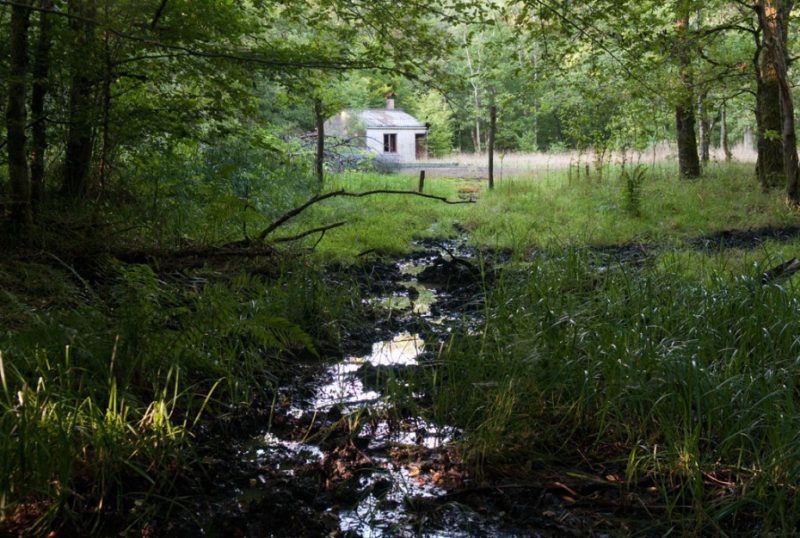
After WWI, unable to keep up with the impossible task of removing endless undetonated weapons, human and animal remains, the French government decided on a forced relocation of residents which led to the creation of the Zone Rouge. Entire villages wiped off the map were considered “casualties of war”.
The French Interior Ministry estimates that at least 12 million unexploded shells reside in the hills and forests that rise above Verdun.
British, French, American, and German armies fired approximately 720 million shells and mortar bombs on the Western Front between 1914 and 1918. Military experts estimate that as many as one in five rounds of ammunition fired by either side failed to explode. As a direct result of land contamination by unexploded ordinance, 16 million acres of France were cordoned o= at the end of 1918, including the 2 million acres around Verdun. Known as the Zone Rouge, they remain forbidden territory to this day. The Département du Déminage was created after the end of the Second World War to find, remove, and destroy shells and bombs from both wars. This activity has cost the department 630 démineurs to date, all killed while clearing unexploded munitions.
At the current rate of clearance it is a conservative estimate that the Département du Déminage will still be finding these weapons nine hundred years from now.

Agricultural use and the reconstruction of housing were forbidden by law after the war because of the presence on the land of thousands of human corpses and unexploded munitions. In 2012, the local authorities in the Nord-Pas-de-Calais region ordered a ban on consumption of tap water in 544 municipalities after the discovery that it contained a dangerously excessive amount of perchlorate, a chemical used in the production of explosives.
North of Verdun, in the ghost villages that “died for France” and were never rebuilt, discovery trails and memorial sites have been opened to the public around the red zones. 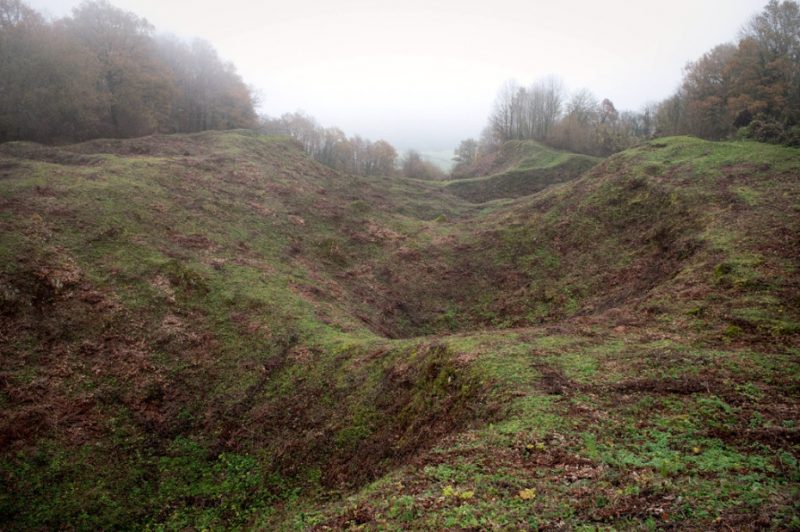
The tap water ban concerned areas that are situated on the sites of the 1914-18 battlefields. Some parts of the Red Zone were never, or only partially, cleaned up. Among these are patches of land that were reforested, such as around Verdun and Vimy. During the winter period between 2005 and 2006, a test search for explosives in an area near the Vimy Canadian National Memorial, and which had never been the object of explosive ordnance clearance, found about 300 unexploded bombs lying no more than 15 centimetres below ground. In this photograph of a Red Zone site, a reminder of the danger that lurks below this bucolic scene is a sign reading ‘Entry forbidden, unexploded munitions’.
After WWI, in a rush to convert areas for the growth of crops or livestock, the first industrial pig farm was established as early as 1929 near the site of the Battle of Verdun. The 25 hectare pig farm was riddled with shell holes after the chemical treatment of the soil.
The French word “Verdunisation”, referring to the treatment of drinking water using chlorination which originated in Paris in 1911, actually takes its name from this region.
Meanwhile, teetering on the edges of the Zone Rouge on northeastern France, surrounding villages and towns are making the best of a bad situation. To compensate for all the quarantined land they can’t and probably never will be able to farm or ever set foot on, locals take advantage of the region’s military history. In Pozières, one of the villages that was completely destroyed in World War I and subsequently rebuilt, there is a café and restaurant called “Le Tommy”, dedicated to the sacrifice of the allied forces, which has reconstructed a WWI trench in its back garden for tourists (pictured above).
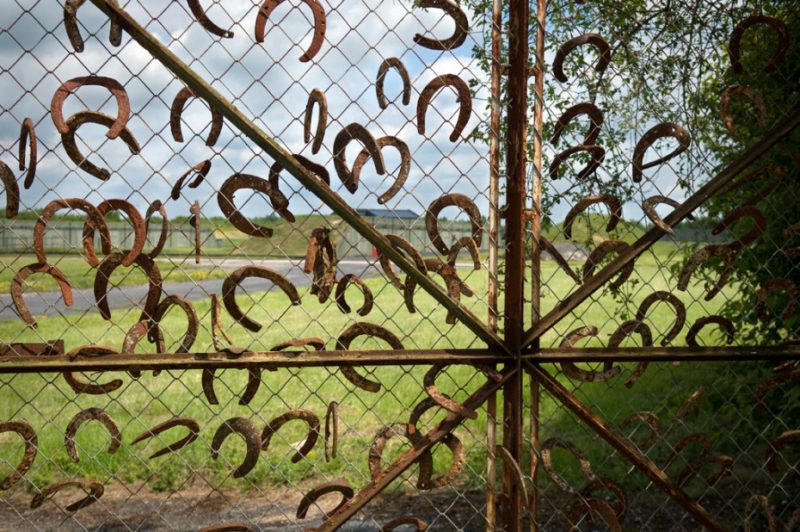
Images@ Olivier Saint Hilaire, Find his website and more photographs featured in this article here.


